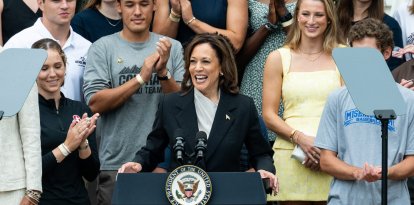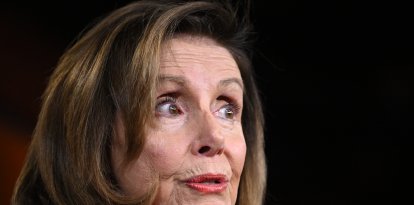Analysts surrender to the 'red wave' in the polls
FiveThirtyEight already recognizes that Democrats are not favored to control the Senate. The Cook Political Report and Inside Elections have also picked up the trend in favor of Republicans.

Marco Rubio/ Cordon Press.
FiveThirtyEight began to give Democrats a better chance of controlling the Senate as of July 26: citing a 51% chance that they will maintain control of the upper house.
How does 538 calculate these possibilities? For each election, it assigns the options of each of the different candidates and collates all possible combinations. Creating a percentage for all of them is the last and easiest step.
Since then (late July), 538 has been giving the Democrats a greater chance of controlling the Senate, giving them 71% of all possible outcomes.
FiveThirtyEight recognizes trend change
But recently, Nate Silver, creator of the election analysis website, has taken a U-turn. Prior to October 17th, it still gave the Democrats two out of three options for control of the Senate, now it only gives them 55%. The central forecast, with 50 senators per party and the deciding vote in the hands of Vice President Harris, has not changed. But he now recognizes that this outcome is even more uncertain than before.
It is a similar story in the House of Representatives. 538 always predicted a Republican victory but went so far as to give the Democrats a 31% chance of victory. It now gives him only 19 out of 100 combinations, and his central forecast is 229 congressmen for the GOP (the majority is at 218), and 206 for the Democrats.
It's the economy, stupid
What explains this shift in 538's electoral analysis? The shift has been so pronounced that Nate Silver has found it necessary to explain himself to his millions of followers.
Silver says they expected the Republicans to improve in the final weeks before the election, "just based on historical trends." But that's not the only thing: "There are also indications in the data that the economy has become even more important to voters, as issues that dominated the conversation over the summer, such as abortion and guns, have faded." And even though the vote is closely split across the country between the Democratic and Republican parties, "there are certain issues where voters trust one party more than the other. And the economy is one of the issues where Republicans have an advantage."
CPR corrects bias
The dean of poll analysis, Real Clear Politics, has long recognized the turnaround. The analysis of their surveys started identifying the red wave on September 22, while 538 started collecting theirs on October 13; three weeks later.
On the other hand, RCP corrects the results for survey bias. Because that bias is pro-Democrat, the results RCP forecasts are more favorable to Republicans than those of other analysts. The central projection for the Senate is 53 republican senators to 47 Democratic. In the House of Representatives, he expects the GOP to gain anywhere from 12 to 47 seats.
Cook and Inside Politics
The Cook Political Report is another analyst that has surrendered to the Republican surge. The newspaper The Hill reports Cook's change in perspective, explained by David Wasserman in a letter to subscribers.
Cook's projection has changed: They go from projecting a gain of between 10 and 20 House seats, to gaining as many as 25 more. Inside Elections, another independent analyst, predicts that the Republicans will win between 8 and 25 representatives. The Hill reports this analysis by David Wasserman:

























